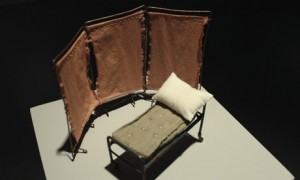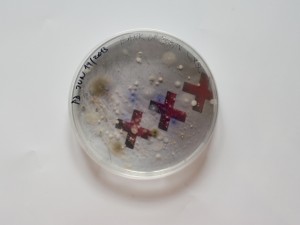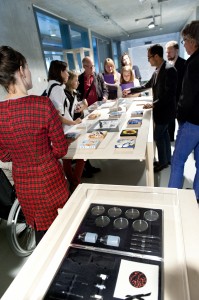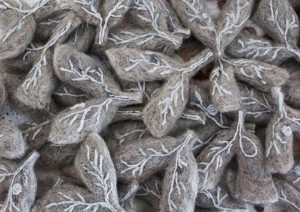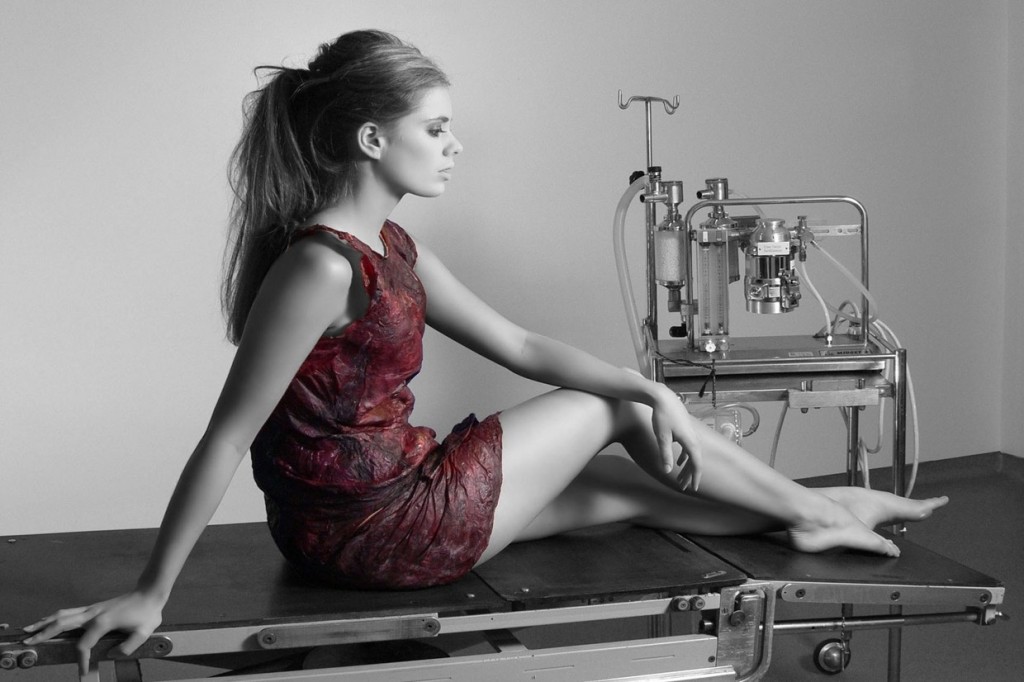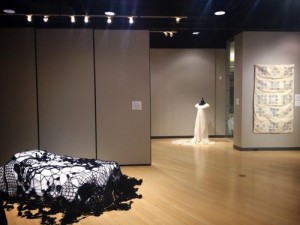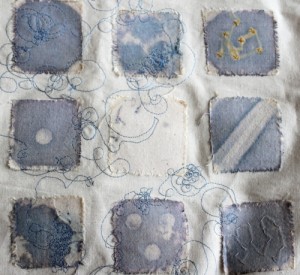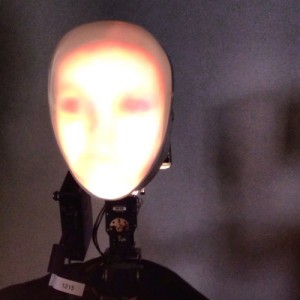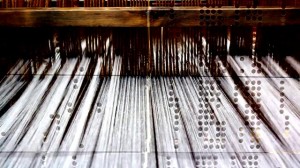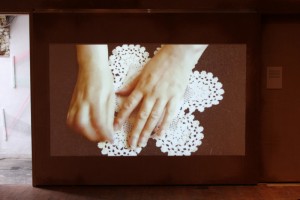Blog
MEDinART in Fabrica Vitae in Athens in Andreas Syggros Museum!

Delighted to announce that MEDinART video will participate in the International Medical Art exhibition “Fabrica Vitae” that will take place…
MEDinART Autumn Newsletter

Happy to announce that the first MEDinART Autumn Newsletter has been send to MEDinART artists and MEDinART friends! The newsletter…
“Trust Me, I’m an Artist: Towards an Ethics of Art and Science Collaboration”: the new book by Anna Dumitriu and Bobbie Farsides

“Trust Me, I’m an Artist: Towards an Ethics of Art and Science Collaboration” is a new book by Anna Dumitriu…
Art in good health: how science and culture mix the best medicine
Why are so many health organisations funding art projects and what can artists and scientists gain from close collaboration?
An interesting article by Laura Barnett, Guardian Professional
Art meets science: a work from The Romantic
Disease by artist Anna Dumitriu. Photograph: Watermans
Public Engagement in Science through Art _ Event by waag Society_on 31 January 2014, Amsterdam
Public Engagement in Science through Art
Politics, Ethics, Power and Propaganda – An ‘ICT and Art Connect’ Event by Waag Society
This special evening of short talks, discussions and networking brings together artists, scientists and technologists to investigate the role of art and public engagement in science. We consider forms of best practices and hope to develop new collaborations.
Many people believe that art is able to communicate important issues in science and technology to a wide range of audiences, that aren’t reached by traditional science communication techniques. But is this view well founded? What are the issues that need to be considered to achieve best practices? Are we talking about the instrumentalisation of art to create science propaganda? Or about enabling artists to work with cutting edge technologies in contexts that enable audiences to participate in debates around emerging technologies and ethical problems that they would not otherwise have access to? And how can we help achieve the best results for both art and science?
For more information on the programme follow this link:
http://waag.org/en/event/public-engagement-science-through-art
BIODESIGN: on the cross pollination of Nature, Science and Creativity
The New Institute
Netherlands Architecture Institute (NAi)
Premsela, the Netherlands Institute for Design and Fashion
Virtueel Platform, e-culture knowledge institute
23.1.2014, 19:00–23:00
How Do You Do Biodesign
How Do You Do Biodesign is an evening for architects, urban designers, product designers, fashion designers, artists and developers of digital technology and media, which will illuminate exactly what biodesign co-produced by Het Nieuwe Instituut and the Willem de Kooning Academy.
(…)
For more info, follow this link here.
Anna Dumitriu’s new solo Exhibition “The Romantic Disease: an Artistic Investigation of Tuberculosis”
Opening reception of “The Romantic Disease: An Artistic Investigation of Tuberculosis” – a brand new solo exhibition by Anna Dumitriu showing installations and sculptures made with strains of mycobacteria, transformed historical artefacts, and textiles that our reveal the complexities of Tuberculosis (TB) and our responses to the disease. The show explores the strange history of TB from artistic, social and scientific perspectives and covers subjects such as superstitions about the disease, its literary and romantic associations, the development of antibiotics and the latest research into whole genome sequencing of bacteria.
Artworks in The Romantic Disease” are made with a combination of textile art and biological matter including strains of Mycobacterium vaccae, M. bovis and M. tuberculosis that have been sterilized prior to exhibition. Re-crafted historical artefacts and objects are added to the mix. For example, Dumitriu has developed a series of textile installations stained with bacteria dyes patterned using antibiotic ‘resists’, which focus on how early ‘antibiotics’, such as Prontosil, were derived from chemical dyes. For ”Where there’s dust there’s danger” she has created a series of tiny felt lungs from wool and dust into which she has incorporated the DNA of killed Mycobacterium tuberculosis produced in a Containment Level 3 Laboratory (the highest level for handling bacteria). Around a century ago dust was incorrectly thought to be one of the primary causes of the disease. Amongst the altered historical artefacts an intricately carved and engraved Pneumothorax Machine can be found, previously used to collapse lungs of unfortunate patients ‘to give them a rest’.
The exhibition has been developed through Anna Dumitriu’s ongoing artist’s residency at The University of Oxford with the UK CRC Modernising Medical Microbiology Project, and is funded by The Wellcome Trust.
The show is also open 16th January 2014 – 24th March 2014, daily 12pm (noon) – 9pm
There will also be a major one day symposium on World Tuberculosis Day on 24th March 2014. with key speakers in the field of TB and press conference will be held at Waterman’s for World Tuberculosis Day on 24th March. The latest research into this disease, which currently affects one third of the World’s population, will be discussed in a highly accessible way.
www.romanticdisease.eventb
As well as the exhibition and symposium, The Romantic Disease has an ‘open lab’ workshop with Anna Dumitriu, Dr Simon Park, Dr Melissa Grant and special guests. This will run on five Saturdays, 11am – 5pm, on 15th and 22nd February, 1st, 15th and 22nd March 2014 and visitors on those days will see the group at work in the gallery.
To attend the open lab see www.openlabworkshop.eventb
Watermans, 40 High Street, Brentford, West London, UK, TW8 0DS
http://
Artists create bacteria-fermented wine dress
A research lab that started out with hopes of creating a cyborg with self-developing skin has created the newest line in womenswear — skintight dresses made from fermented wine.
Read more here:
“The Institute of Unnecessary Research” brings together art, science and philosophy_Director: Anna Dumitriu
Einstein said: “If we knew what it was we were doing it wouldn’t be called research, would it?” “The Institute of Unnecessary Research” presents a new paradigm in the way artists are engaging with the world through transdisciplinary practice and connective aesthetics. Bringing together art, science and philosophy by creating participatory audience experiences, performances and installations. Sometimes humorous and sometimes grotesque, their work pushes the boundaries and critically questions the means of knowledge production in the 21st Century. Artists are innovators, if a new piece of technology or a new medium, becomes available; artists want to try it, to experiment with it- from microbiology to robotics; from tissue culture to neuroscience. Some artists take on the role of a scientist in almost a performative way and some scientists become artists themselves. Philosophy and ethics is always at its core and the work unpacks the instrumentalization of science for commercial and political ends. Forms of “connective aesthetics” are used to engage the audience in a participatory experience that extends and generates new outcomes throughout the exhibition and go beyond simple interactivity, throwing authorship into question, as members of the audience are inspired to become Unnecessary Researchers in their own rights. The IUR is a hub for researchers and artists working experimentally and deeply engaged with their specific research areas. We present our research through performative and experiential methods, engaging the public and new audiences in our ideas. We organise performance events (many of which can be seen here) in art galleries and other non-traditional settings (including: universities, businesses and festivals) to engage the public in our research and meta-research. We also create participatory workshops, where participants become the researchers and learn about our work experientially. We are specialists in our specific research fields and deeply committed to making our work accessible. We offer exhibitions (curated around specific themes in our research), talks and organise symposia and are able to suggest speakers for events. To organise a special IUR event, get involved with our work, be kept informed about events or for permission to use images please contact us. For more information contact Anna Dumitriu, Founder and Director of the Institute of the Unnecessary Research at: [email protected]
Also check Anna’s Dumitriu work at MEDinART here
Cultural history and Biology collision: The Art and Science of Linen by Anna Dumitriy and Alex May
The Art and Science of Linen
Cultural history and biology collide in this video artwork created by artists Anna Dumitriu and Alex May.
With the aid of microbiologist Dr. John Paul, Dumitriu and May trace methods of linen production from the late nineteenth century and locate the precise culture of bacteria integral to this production.
Read more here: http://www.artandsciencejournal.com/post/52240353594/art-and-science-of-linen

